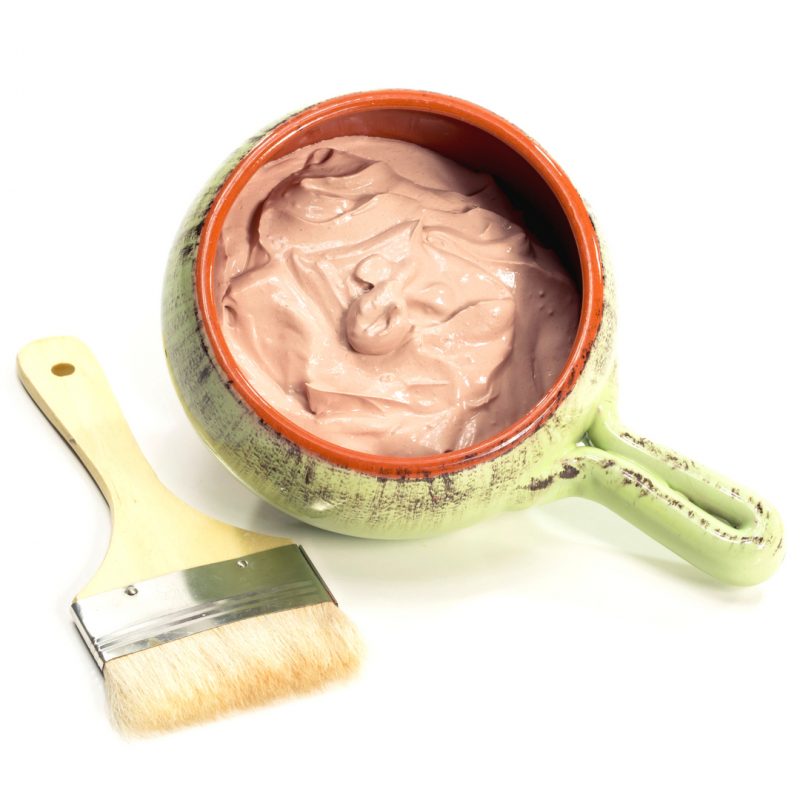Uncategorized
Pro Tips for Clay Spa Treatments

Aestheticians, spa technicians, and guests alike love body treatments featuring clay-based products. And what’s not to love? Clays enhance skin health by helping to draw out toxins, calm inflammation, and ease pain.
Let’s look at some of the different types of clay for skin care, clay’s benefits, and some best practices for using clay in your spa services.
Types of Clay for Skin Health
Bentonite Clay
Bentonite clay comes from volcanic ash and consists mainly of minerals in the smectite group. Bentonite draws out positively charged toxins because of its strong negative electrical charge. It’s the most absorbent of the clays mentioned in this article and is especially helpful for oily skin.
Bentonite Clay Benefits
- Helps treat and prevent acne breakouts by absorbing oil and impurities
- Draws out toxins
- Exfoliates and helps temporarily fade dark spots
- Firms skin


Rhassoul Clay
Rhassoul clay (also known as Ghassoul clay or Moroccan clay) originates from the Atlas Mountains of Morocco. It’s widely found in natural cosmetic products, like soaps, shampoos, and skin conditioners, and is marketed for its cleansing and oil-removing properties. Like Bentonite clay, Rhassoul clay works well for balancing oily skin.
Rhassoul Clay Benefits:
- Fights acne (cleanses skin and removes blackheads)
- Removes impurities
- Tightens pores
- Improves skin clarity and elasticity
Kaolin Clay
Kaolin clay comes from rocks rich with the mineral kaolinite. A soft, earthy clay with a low shrink–swell capacity, kaolin clay is gentler and has a less intense drawing capacity than Bentonite and Rhassoul clays. This clay is beneficial for guests with dry or sensitive skin.
Kaolin Clay Benefits
- Absorbs extra oil from the skin surface
- Removes dirt and impurities that can clog pores
- Calms irritated skin
- Evens skin tone

Do’s and Don’ts When Using Clay Spa Treatments
How can you optimize clay’s benefits in your spa’s body and facial treatments? Consider these best practices:
Do’s:
- For oily skin, apply a warmed — 104°F (40°C) — clay-based body wrap or mask to help soften sebum. This will enhance the drawing capabilities of the clay. This method is helpful for problematic skin as it promotes perspiration and opens sebaceous glands.
- For sensitive skin, use a mild clay, such as kaolin. Apply clay-based products when cool, which will help reduce inflammation and calm irritated skin.
- Always use an impermeable barrier, such as body wrap plastic, when applying clay-based body wraps. Doing so helps to hold in heat and optimize the treatment’s effectiveness.
- Allow clay masks to work their magic for at least 20 minutes to maximize sebum adsorption.
- To ensure proper product consistency, always follow directions provided by the manufacturer. “Stretching” a product by mixing it with too much water can reduce its effectiveness.
- Watch clients closely for signs of dizziness and lightheadedness after clay treatments. The thermal effects of clay body wraps can cause core body temperature to rise and temporarily decrease blood flow to the brain, which could result in fainting if guests get up and move around too quickly after their treatment.
Don’ts:
- Never prepare clay products in a metal bowl because the metal can react with the clay and adversely alter its drawing properties. Instead, mix clay-based skincare products in a flexible medical-grade rubber mixing bowl or a BPA-free plastic bowl.
- Do not perform clay treatments on anyone pregnant. The thermal effects of clay body wrap treatments can cause the guest to sweat as their core body temperature rises. Dehydration is a potential risk (even if the guest consumes water during the wrap), which could stimulate uterine activity and cause contractions. Moreover, a heightened core body temperature increases the risk of neural tube defects in early pregnancy.
- Do not leave your client alone in the treatment room. Clay body treatments tend to raise body temperatures quickly, potentially making clients uncomfortable and even claustrophobic.
Final Thoughts
Before using a clay spa treatment, ask your supplier or the product manufacturer for detailed protocols. For your guests’ health and safety — and to ensure optimal results — heed products’ directions. Also, as with all services, give your guests realistic expectations and ensure they understand the treatments they’re receiving are not medical treatments.
Curious about clay? Contact us for information about our clay-based body wrap products and how to incorporate them into your spa menu!
